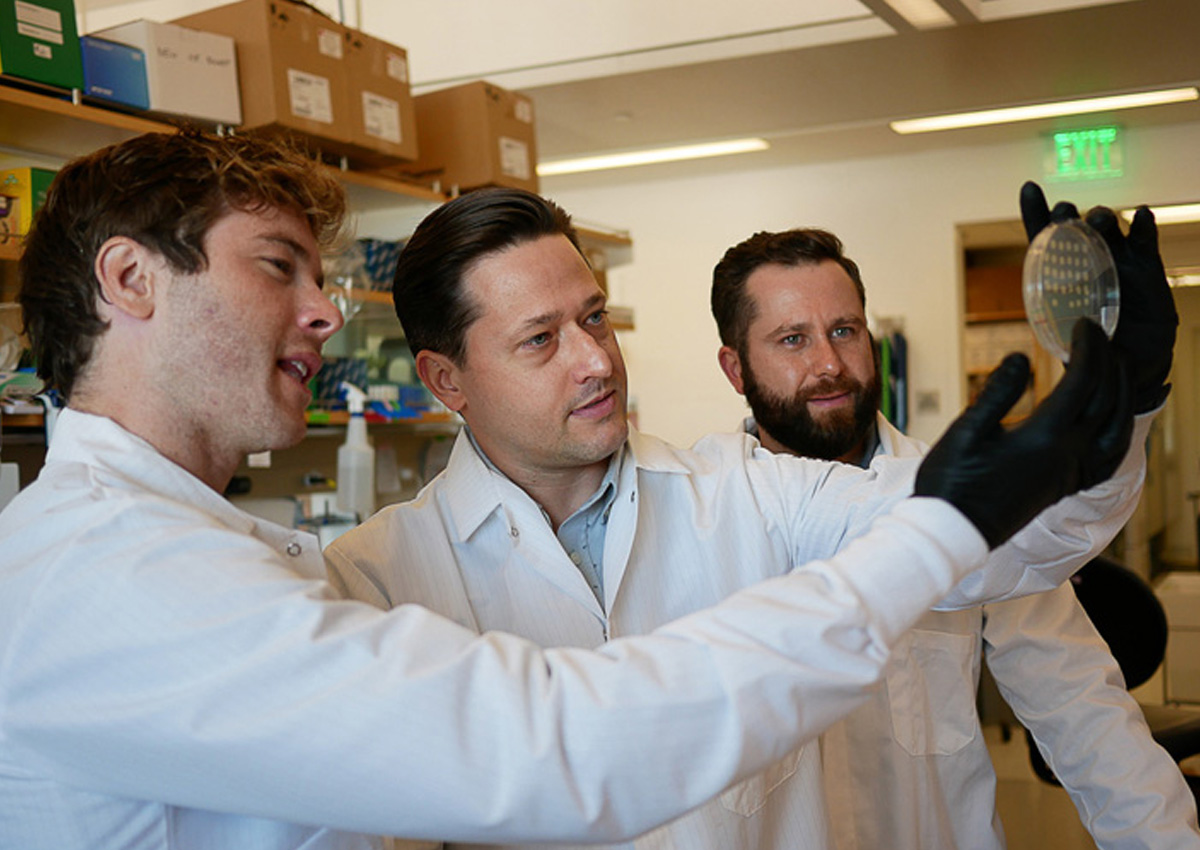
Researchers Edit Genomes of Microbes Growing in a Community of Different Species
December 9, 2021| |
Since their discovery, CRISPR enzymes have been used to edit the genomes of one type of cell at a time. Now, the group that invented the CRISPR-Cas9 genome editing technology nearly 10 years ago has found a way to add or modify genes within a community of many different species simultaneously, opening the door to what could be called "community editing."
The technology is still exclusively applied in lab settings, but it could be used to edit and track edited microbes with a natural community, such as in the gut or on the roots of plants. The team first developed an approach to determine which microbes in a community are actually susceptible to gene editing. The screening technique called ET-seq (environmental transformation sequencing) uses as a probe a transposon, or jumping gene, that easily inserts randomly into many microbial genomes. By sequencing the community DNA before and after the introduction of the transposon, they were able to pinpoint which species of microbes were able to incorporate the transposon gene. In one experiment involving a community of nine different microbes, the team successfully inserted the same transposon into five of them using different transformation methods.
Also developed was a targeted delivery system called DNA-editing All-in-one RNA-guided CRISPR Cas Transposase (DART) that uses a CRISPR-Cas enzyme similar to CRISPR-Cas9 to home in on a specific DNA sequence and insert a bar-coded transposon. To test the DART technique with a more realistic microbial community, the researchers took a stool sample from an infant and cultured it to create a stable community composed mostly of 14 different types of microorganisms. They were able to edit individual E. coli strains within that community, targeting genes that have been associated with disease.
For more details, read the article in the Innovative Genomics Institute.
| |
You might also like:
- Scientists Produce New Antibiotics Using CRISPR-Cas9
- CRISPR-Cas12f1: A Mini Genome Editing Tool
- Pocket K No. 54: Plant Breeding Innovation: CRISPR-Cas9
Biotech Updates is a weekly newsletter of ISAAA, a not-for-profit organization. It is distributed for free to over 22,000 subscribers worldwide to inform them about the key developments in biosciences, especially in biotechnology. Your support will help us in our mission to feed the world with knowledge. You can help by donating as little as $10.
-
See more articles:
-
News from Around the World
- USDA FAS Reports Biotech Updates in Pakistan and Korea
- International Collaboration Brings Wild Wheat's Untapped Diversity into Elite Lines
- Global Database Reveals Humans are Biggest Driver of Plant Homogenization
- Thailand Presents Impressive Line-Up of Biotech Crop R&D During ISAAA's Latest Webinar
- FSANZ Opens Call for Comments on GM Wheat Product Importation
- ISAAA to Release Primer on Genome Editing
- Microbiome Study Provides Strategies for Healthy and Climate-Resistant Fruit and Vegetables
-
Research Highlights
- Suppressing Jasmonate Signaling Attenuation Confers Stress Tolerance in Arabidopsis
-
Plant
- University of Texas Scientists Discover Potential New Gene Editing Tools
- Scientists Use TALENs to Edit Tuna
- Researchers Edit Genomes of Microbes Growing in a Community of Different Species
-
Health
- Omicron Variant Could Weaken COVID Vaccine Protection
-
Read the latest: - Biotech Updates (October 8, 2025)
- Gene Editing Supplement (September 24, 2025)
- Gene Drive Supplement (February 22, 2023)
-
Subscribe to BU: - Share
- Tweet

